
Fast, affordable Internet access for all.

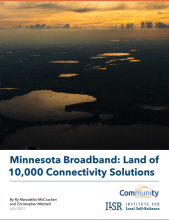
In a new report, the Institute for Local Self-Reliance showcases the diverse range of approaches communities and local Internet Service Providers (ISPs) have taken to expand affordable, high-quality Internet access in Minnesota. It includes a series of case studies that detail how communities are meeting the connectivity challenges of a broken marketplace shaped by large monopoly service providers.
Download Minnesota Broadband: Land of 10,000 Connectivity Solutions [pdf] here.
The profiled projects include municipal networks, public-private partnerships, cooperatives, and private investment. They run from the most rural areas of the state to Minneapolis. Some examples include:
Ry Marcattilio-McCracken, co-author of the report and Senior Researcher with ILSR’s Community Broadband Networks initiative, said of the report’s findings:
Our new report, Minnesota Broadband: Land of 10,000 Connectivity Solutions [pdf], showcases the diverse range of approaches communities and local Internet Service Providers (ISPs) have taken to expand affordable, high-quality Internet access in Minnesota. It includes a series of case studies that detail how communities are meeting the connectivity challenges of a broken marketplace shaped by large monopoly service providers.
The profiled projects include municipal networks, public-private partnerships, cooperatives, and private investment. They run from the most rural areas of the state to Minneapolis. Some examples include:
Ry Marcattilio-McCracken, co-author of the report and Senior Researcher with ILSR’s Community Broadband Networks initiative, said of the report’s findings:
Minnesota communities and local ISPs have found creative and sustainable ways to build future-proof networks across the state, despite a broken marketplace and state barriers that favor slow-moving, out-of-state monopoly providers clinging to outdated technology. Lawmakers must stand up for the cities and towns that sent them to the legislature, and remove the obstacles that prevent a more competitive market and local broadband solutions.
It’s no small feat to plan, deploy, and operate a municipal citywide Fiber-to-the-Home (FTTH) network, but communities are doing it. We’ve put together a Citywide Municipal FTTH Networks list and a map, with quick facts at your fingertips. If your community is considering such an investment, this list can offer a starting point on discovering similarly situated locations to study.
The list is divided by state and each state heading offers a description of any barriers that exist and a link to the statute in question. Under each community, we also included relevant links such as to the provider’s website, coverage on MuniNetworks.org, and reports or resources about the network.
We used four basic criteria to put a community on our list and map:
Share the list far and wide and if you know of a community network that meets our criteria that we missed, please let us know. Contact H. Trostle at htrostle@ilsr.org to suggest additions.
The Pioneer Press published this op-ed about Minnesota high speed Internet access and availability on December 3, 2015.
Christopher Mitchell: Competition and community savings
Minnesota has just one more month to achieve its goal of high speed Internet access available to every resident and local business. In 2010, the Legislature set a 2015 goal for universal Internet access at speeds just under the current federal broadband definition. But the state never really committed to anything more than a token effort and will fall far short.
Even for those of us living in metro areas that have comparatively high speed access, we don't have a real choice in providers and most of us lack access to next-generation gigabit speeds.
The big cable and telephone companies excel at restricting competition by manipulating markets, state and federal government policy, and other means. This is why so many local governments across the nation are themselves expanding Internet infrastructure: to ensure local businesses and residents can access affordable next-generation services and create a real choice. We should be encouraging these local approaches.
The Institute for Local Self-Reliance is tracking more than 450 communities where local governments are expanding choices with direct investments in networks. Just this month, some 50 communities in Colorado and two in Iowa voted to move forward with plans for their own networks or partnerships.
Here in Minnesota, we have seen a variety of successful approaches. Eagan's modest network attracted a data center.
Dakota County has saved itself millions of dollars by placing conduit for fiber in the ground at very low cost as part of other projects. Now it can use that to help local companies to compete with the big cable and telephone companies.
Scott County's fiber network has helped create more than 1,000 jobs and tremendously improved access in area schools. In Sibley County and part of Renville, cities and townships joined together to help launch a new cooperative, RS Fiber, which shows tremendous promise. Cooperatives, which are effectively community-owned as well, offer some of the best connectivity in rural regions of the state.
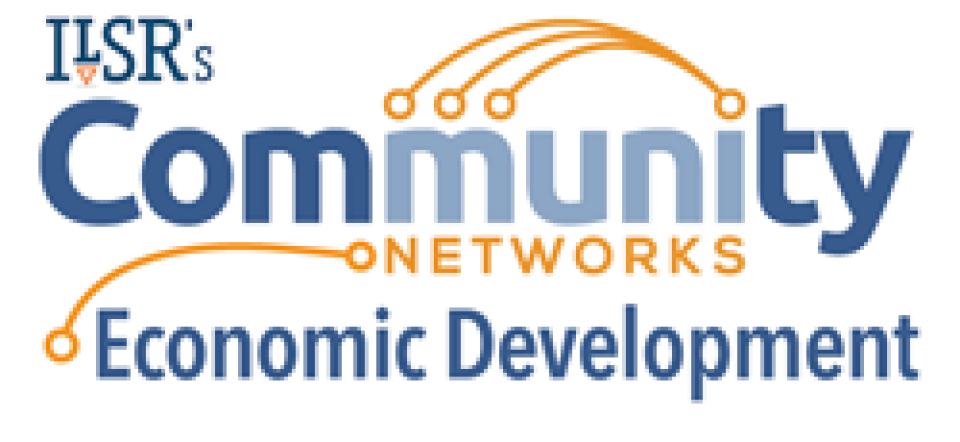
When a community invests in a municipal broadband network, it often does so because it hopes to reap economic benefits from the network. Many people and organizations have explored the positive relationship between municipal Internet networks and economic development, including a White House report published in January 2015. Municipal networks create jobs by ensuring businesses have fast, affordable, and reliable Internet access; the old DSL and cable networks just don't cut it. These networks improve the productivity of existing businesses and attract new businesses to communities, allow individuals to work from home more effectively, support advanced healthcare and security systems, strengthen local housing markets, and represent long term social investments in the form of better-connected schools and libraries. They also create millions of dollars in savings that can be reinvested into local economies.
"Upgrading to higher speed broadband lets consumers use the Internet in new ways, increases the productivity of American individuals and businesses, and drives innovation throughout the digital ecosystem." - Executive Office of President Obama
When municipalities choose to deploy fiber networks, they introduce Internet services into the community that are not only significantly faster than DSL and cable, but more reliable. With more reliable fiber connections, businesses and individuals are far less likely to experience temporary blackouts that can halt productivity in vexing and expensive ways. And because these networks are locally-owned and operated, business owners do not have to spend hours on the phone with an absentee Internet Service Provider like AT&T in the (albeit unlikely) event of a problem.
We at the Institute for Local Self-Reliance have catalogued numerous examples of economic development achievements that have occurred as a result of local governments deploying a municipal broadband network. Below, you can find a wide range of articles, studies, anecdotes, and other resources that speak to the economic successes enabled by municipal networks, organized by topic:
Keep up to date with all things community broadband by subscribing to a once-per-week email with stories about community broadband networks.
Municipal networks create jobs:

Look no further than Morristown, Tennessee, for an example of job creation thanks to municipal fiber. The city took advantage of its local electrical utility, Morristown Utility Systems, to provide gigabit speeds, and businesses jumped at the opportunity. In 2013, Oddello Industries, a furniture manufacturer, brought 228 jobs to the community after investing in a $4.4 million site expansion in Morristown. More recently, a call center looking to relocate to the city was wowed by the municipal utility’s offer to install fiber for free because the city valued the future economic benefits the call center would bring to Morristown over the cost of the fiber installation.
"You can't grow jobs with slow Internet." - Stephanie Rawlings-Blake, Mayor of Baltimore
Municipal networks attract new businesses:
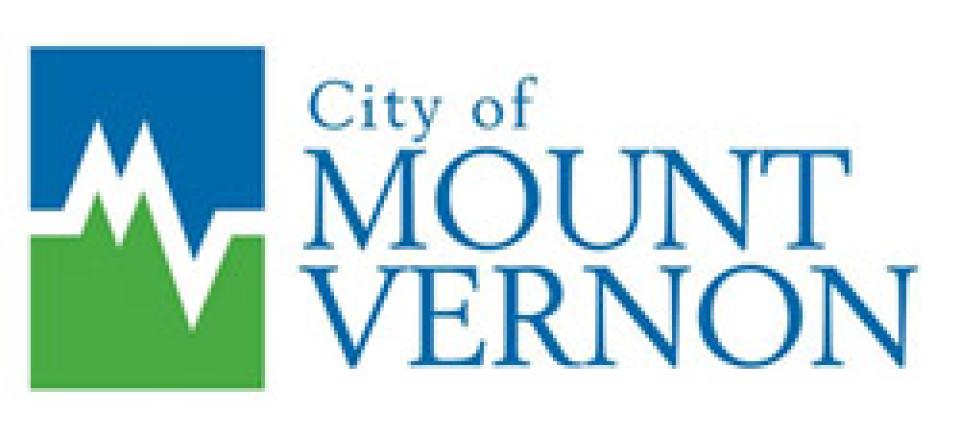
The city of Mount Vernon, Washington has two things in common with our country’s first president, but unlike George, it boasts an impressive municipal broadband network that has attracted high-tech businesses. For example, a digital legal firm, Blank Law, relocated from Seattle to Mount Vernon in order to take advantage of faster speeds offered by the city’s municipal broadband network. While high-speed Internet was not the only reason Blank Law cited for choosing Mount Vernon over other towns (other reasons include quality of life and free parking), it played a significant role. Fiber is rarely the sole reason for a relocation, but it can often be a deciding factor.
"It's almost a feeling of disbelief when we tell companies today we can provide a gig to your business and to your house...These companies want to go where they can see the gig service." - Marshall Ramsey, President of the Morristown, Tennessee Chamber of Commerce
Municipal networks serve existing businesses and keep critical jobs in town:

The small Minnesota town of Windom nearly entered crisis mode when Fortune Trucking, a local company that employed 47 people in a town of 4,600, announced that slow Internet speeds might force it to leave town. Although the company’s headquarters were located a mile outside of the Windom’s jurisdiction, community members successfully lobbied to bring municipal fiber to Fortune, saving those jobs and stabilizing the local economy.
"Municipal broadband can be a powerful lever against the digital divide that condemns people to the isolation and reduced economic opportunities experienced by many of our low-income, disabled, and people of color community members" - Kshama Sawant, Seattle City Councilmember

Municipal networks support home-based productivity:
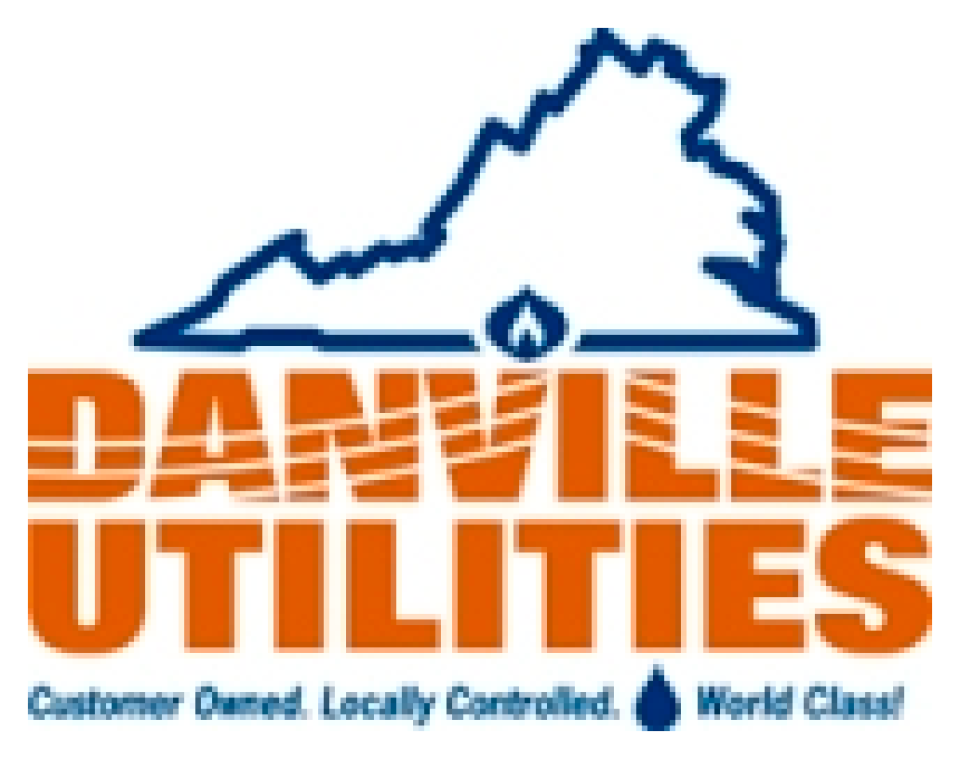
Municipal networks advance healthcare, education, and research:
"We are embarking on new initiatives with our local school district and regional colleges and universities to leverage broadband and to facilitate discussion between schools and the business community to strengthen, retain and attract quality workforce" - Dana McDaniel, Deputy City Manager of Dublin, Ohio
Municipal networks initiate tech booms and incubate start-ups:

"...in the 21st century, in this age of innovation and technology, so much of the prosperity that we're striving for, so many of the jobs we want to create, depend on our digital economy" - President Barack Obama, Speech at Cedar Falls Utilities

Municipal networks save money, which can be reinvested in local economies:
Municipal networks increase home values:
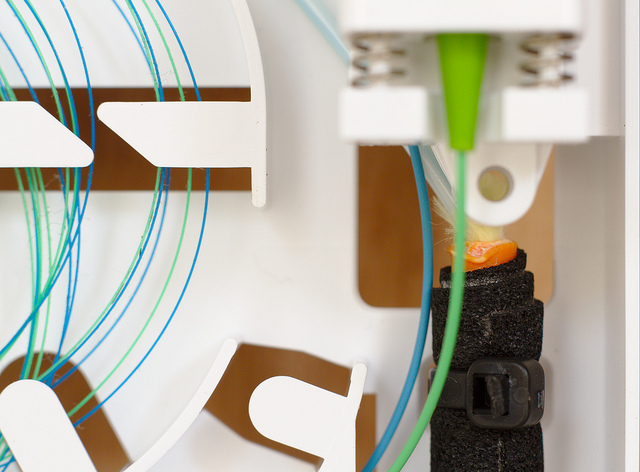 Photo courtesy of Dennis van Zuijlekom through Flickr Creative Commons
Photo courtesy of Dennis van Zuijlekom through Flickr Creative Commons
General resources on economic development and municipal / broadband networks:
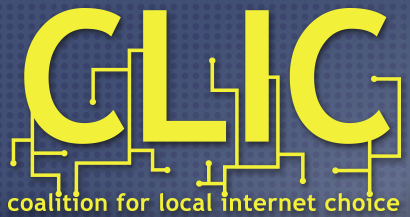
"The message to policymakers is clear: If you want to increase economic growth, focus on broadband." - Robert Pepper, Vice President of Global Technology Policy at Cisco
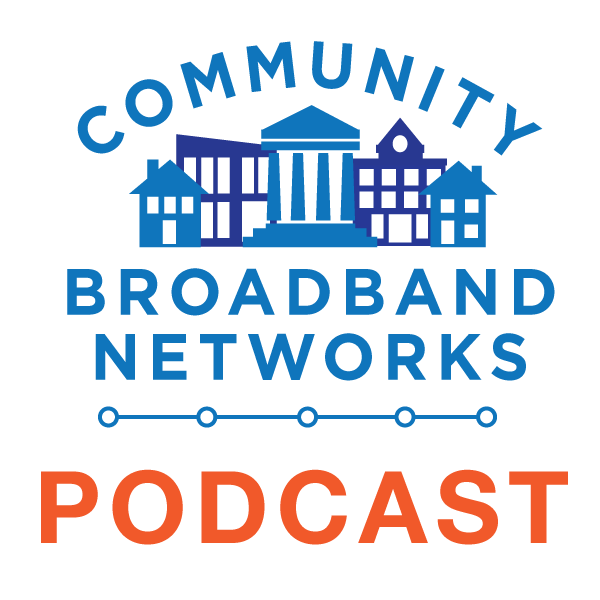
Video and audio resources on economic development and municipal networks:
"Having the infrastructure in place around technology, as well as the asset of this really historic and charming downtown, is a really interesting intersection and I think a lot of people are drawn to that." - Kimberly Van Dyk, Director of Planning and Community Revitalization of Wilson, North Carolina
Thanks to Jeff Hoel for providing the transcript for the Episode 64 of the Community Broadband Bits podcast with Dan Olsen on WindomNet's benefit fot southwest Minnesota. Listen to this episode here.
00:05:
Dan Olsen: You can have broadband -- I mean true, you know, fiber-fed broadband.
00:11:
Lisa Gonzalez: Hi again. This is Lisa Gonzalez from the Institute for Local Self-Reliance. Welcome to the Community Broadband Bits Podcast.
This week, Chris talks with Dan Olsen, General Manager of WindomNet in southwestern Minnesota. WindomNet has served the local community with fiber service. In addition to the town of Windom, the network serves nearby communities, creating a regional effort. Farmers, manufacturers, government, education, business, and even residents depend on the affordable fiber service. Over the years, Dan has collected numerous stories of economic development directly related to the presence of the network, and he shares those with Chris. Regardless of the stories we are about to hear from Dan, WindomNet is often viewed skeptically, and sometimes its success is questioned. In the interview, Dan and Chris touch on the concept of success for publicly-owned networks. Should munis be judged on the same criteria as Comcast, AT&T, or CenturyLink? Or is there more to success than profitability and the bottom line? Here are Chris and Dan, to talk about how WindomNet has defined its own success in rural Minnesota.
01:13:
Chris Mitchell: Welcome to another episode of the Community Broadband Bits Podcast. I'm Chris Mitchell. And I'm here today with someone I've been trying to get on this show since we first launched it: Dan Olsen, General Manager of WindomNet in Windom, Minnesota, and incredibly interesting municipal network in a small community in southwestern Minnesota. Welcome to our show.
01:36:
Dan Olsen: Good morning, Chris.
01:37:
Update: Read an updated version of this report, published in July 2021, here, titled Minnesota Broadband: Land of 10,000 Connectivity Solutions [pdf]. It revisits all of the below communities to see how they fared over the intervening years, while adding new counties, communities, and, for the first time, two local Internet Service Providers.
In our latest report, All Hands On Deck: Minnesota Local Government Models for Expanding Fiber Internet Access, we analyze how local governments in 12 Minnesota communities are expanding 21st century Internet access to their citizens.
In 2010, the Minnesota legislature set a goal for 2015 - universal access to high speed broadband throughout the state. Even though we have the technology to make that vision a reality, large swaths of the state will not meet that goal. Nevertheless, local folks who have chosen to take control of their connectivity are finding a way to exceed expectations, surpassing the choices in many metropolitan regions.
Some of the communities we cover include:
We delved into networks in Anoka, Carver, Cook, Lake, and Scott Counties. The report also shares developments in the municipalities of Chaska, Buffalo, and Monticello. We tell the story of RS Fiber, located in Sibley and part of Renville County. These communities provide examples of municipal networks, a variety of public private partnerships, and "dig once" policies.
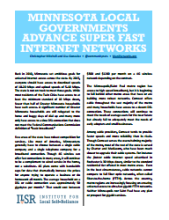

In April, we reported on Spring construction of fiber installation by the Southwest Minnesota Broadband Services (SMBS) in the Jackson area. This is a stimulus-funded expansion growing out of the community-owned WindomNet. The original plan was to have construction completed in Jackson by the end of August, but the job was 97% completed in July freeing the way for business and residential installs.
The Jackson County Pilot reported on the July Kiwanis Club meeting where SMBS's Naomi Pederson presented an update:
As of this past Monday, Pederson said 176 miles of the 181-mile main line had been built.
“People have been thrilled with the service,” Pederson said. “I’m sure businesses will be too.”Pederson said crews will begin residential installs in Jackson July 16. She anticipates crews will be able to hook up around 100 homes per week.
“Jackson has been one of our best towns, with 73 percent sales — much more than anticipated,” she said. “People are very receptive and are signing up for more services than people in our other towns. More services and more sign-ups mean we’re trying our best to keep up.”As of this past Monday, Pederson said 176 miles of the 181-mile main line had been built.
“People have been thrilled with the service,” Pederson said. “I’m sure businesses will be too.”
SMBS received $12.8 million in stimulus funds to develop an ftth network to Bingham Lake, Heron Lake, Jackson, Lake Okebena, Round Lake and Wilder. Check out a map of the fiber route on the SMBS website.
The high level of interest in these communities comes in the face of policymakers in Washington, DC, and many state capitals - they assume rural residents don't know how to use broadband or don't want it. This program shows that when you make good broadband available to people for a reasonable price, they take it in high numbers.
Thanks to BlandinonBroadband for alerting us to this story.